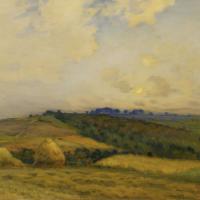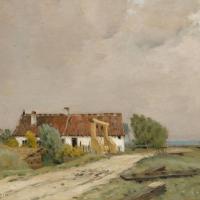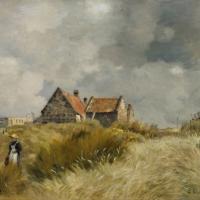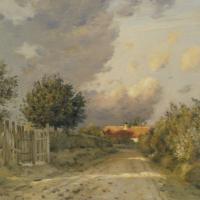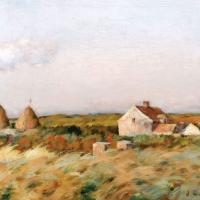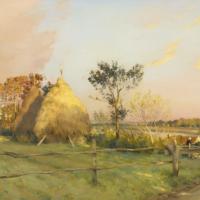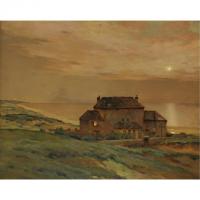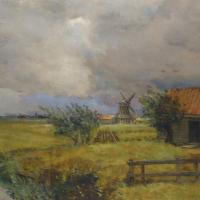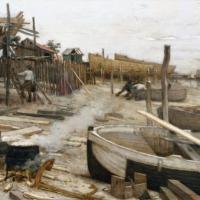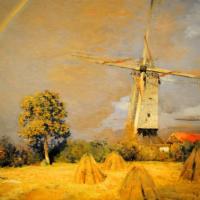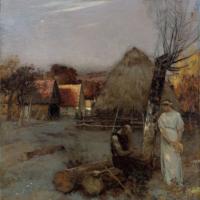Jean-Charles Cazin
After The Harvest
$450.00
Cottage By The Sea
$450.00
Cottage In The Dunes
$450.00
En Samer
$450.00
Figures At The Village Pond
$450.00
Golden Kite
$450.00
Les Meules
$450.00
Moonlight By The Sea
$450.00
Paris Scene With Bridge
$450.00
Paysage Tempetueux
$450.00
The Boatyard
$450.00
The Route Nationale At Samer
$450.00
The Three Stacks
$450.00
Theocritus
$450.00
Jean-Charles Cazin
Jean-Charles Cazin (1840-1901)
Jean-Charles Cazin (May 25, 1840 – March 17, 1901) was a French landscape painter and ceramicist.
The son of a well-known doctor, FJ Cazin (1788–1864), he was born at Samer, Pas-de-Calais. After studying in France, he went to England, where he was strongly influenced by the pre-Raphaelite movement. His chief earlier pictures have a religious interest, shown in such examples as The Flight into Egypt (1877), or Hagar and Ishmael(1880, Luxembourg); and afterwards his combination of luminous landscape with figure-subjects (Souvenir de fête, 1881; Journée faite, 1888) gave him a wide repute, and made him the leader of a new school of idealistic subject-painting in France.
In 1890, Theodore Child discussed a few of his paintings (including a series of five paintings depicting the story of Judith and Holofernes) in Harper's Magazine. He painted a scene from The Odyssey, Ulysses after the Shipwreck.
He was made an officer of the Legion of Honour in 1889. His charming and poetical treatment of landscape is the feature in his tonalism painting which in later years has given them an increasing value among connoisseurs. His wife, Marie Cazin (1844–1924), who was his pupil and exhibited her first picture at the Salon in 1876, the same year in which Cazin himself made his debut there, was also a well-known artist and sculptor.
In 1885—1886 he posed for the figure of Eustache de Saint-Pierre in his friends Auguste Rodins The Burghers of Calais.


